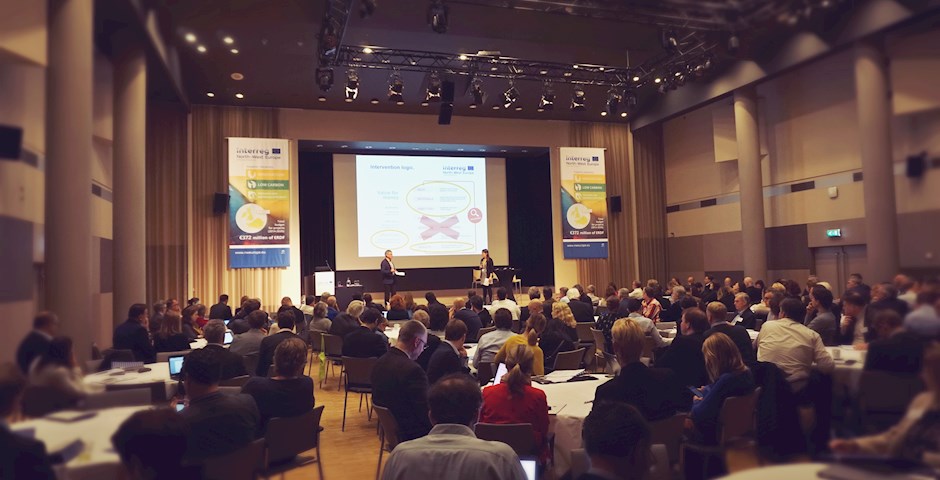Automatic UV control of strawberry powdery mildew
Posted onThe first step towards automated and fungicide-free disease control has arrived! Read More
An important disease in many crops is mildew. Current horticultural practices rely on intensive pesticide use to counter it. However, the use of chemical crop protection results in spray residues on the harvested product and mildew infections cannot always be prevented. Scientific research showed that UV-C light has the potential to become a sustainable alternative for chemical mildew control. The application of UV-C still need to be optimized and automation is required to allow introduction in horticulture. UV-ROBOT will try to tackle these issues and has three main goals:
In the course of the project we will develop, test and demonstrate cost-effective UV-C robots to control mildew in three types of crops:
Horticultural experts in Belgium and the UK will together find ways to incorporate UV-C in current IPM (Integrated Pest Management) strategies of each crop. Belgian expertise in automation and French expertise in data analysis will jointly develop innovative robots that can autonomously apply UV-C. On top, the co-creation of innovative sensors for automatic mildew monitoring by a UK partner specialized in e-nose development will reduce the farmers’ workload and ensure tight disease control.
At the end of the project the developed robots will be available for growers with a user-friendly interface and a crop specific implementation strategy. Demonstration across the NWE region and extensive communication during and after the project will inform growers to ensure innovation roll-out. We hereby aim to lower growers’ dependence on chemical crop protection and thereby reduce pesticide use and spray residues in horticulture across North-West Europe.


101 Duffelsesteenweg
Sint-katelijne-Waver
2860
Belgium
46 Interleuvenlaan
Leuven
3001
Belgium
Stockbridge House Cawood
Selby, Norh Yorkshire
YO8 3TZ
United Kingdom
30 rue Marconi
Mt St Aignan
76130
France
181 Wisbech Road
Littleport
CB6 1RA
United Kingdom
1 Vézendoquet
Saint-Pol-de-Léon
29250
France
1 Maisons des Maraichers –, la métairie neuve
Pont St Martin
44860
France
1 New Road, East Malling
Kent
UK ME19 6BJ
United Kingdom
71 Voort
Hoogstraten
2328
Belgium
Lead partner
| Organisation | Address | Website | |
|---|---|---|---|
| Proefcentrum Hoogstraten |
71 Voort Hoogstraten 2328 Belgium |
stef.laurijssen@proefcentrum.be | www.proefcentrum.be |
| Name | Contact Name | Country | |
|---|---|---|---|
| Proefstation voor de Groenteteelt | Lieve Wittemans | lieve.wittemans@proefstation.be | Belgium |
| Octinion | Jan Anthonis | janthonis@octinion.be | Belgium |
| STC Research Foundation | Lauren Branfield | lauren.branfield@stc-nyorks.co.uk | United Kingdom |
| CESI | Chantal Hurard | churard@cesi.fr | France |
| Roboscientific Limited | Stan Curtis | stan@roboscientific.com | United Kingdom |
| Comité d’Action Technique et Economique | Marine Guerret | marine.guerret@cate.bzh | France |
| Comité Départemental de Développement Maraîche | Brigitte Pelletier | brigitte.pelletier@cddm.fr | France |
| NIAB EMR | Helen Cockerton | helen.cockerton@emr.ac.uk | United Kingdom |
The first step towards automated and fungicide-free disease control has arrived! Read More
The supervision and control of the UV-robot is an important step in the development and implementation of this new technology. Read More
For UV-C treatments of strawberries in outdoor conditions, a new UV-robot has been designed. To avoid damaging the crop, while crossing the crop rows, the implement has been made as slender as possible. Sliding doors are foreseen to cover the lamps. Read More
Here in North Yorkshire, Stockbridge Technology Centre (STC) is hard at work investigating the efficacy of UVC light for incorporation into existing Integrated Pest Management strategies primarily for the treatment of Basil Downy Mildew (caused by the fungal pathogen Peronospora belbahrii), but also delving into the effects of UVC light on Botrytis and both pests and beneficials. Read More
At the end of March 2020 the new trial of the UV-ROBOT project was started at Research Centre Hoogstraten (Belgium). Read More
The investment of a UV-robot is a big step for commercial growers. In autumn 2019 Research Centre Hoogstraten investigated the possibility of complementing the UV-C strategy with biological sprayings so the grower can lower the frequency of UV-C application and use the UV-robot on a larger scale. Read More
On 12 and 13 of February all the partners of the project came together in England at Stockbridge Technology Centre for the General Assmbly Meeting. Read More
A new trial is planted today at the research station for vegetable production in Sint-Katelijne-Waver. The trial is being planted in a greenhouse with a high Bremia pressure. We will therefore not inoculate the lettuce afterwards, nor create a disease prone climate, like was done in previous trials. In those previous trials the Bremia infection was always too heavy to show significant working of the UV-robot. We hope the softer Bremia infection will lead to a better working of the UV-robot. Read More
Thursday 31 October 2019 Proefstation voor de Groenteteelt (Research Station for Vegetable Production) organized the first cucumber workshop of the UV-ROBOT project. Read More
Wednesday 20 September 2019 Proefcentrum Hoogstraten organized the first workshop of the UV-ROBOT project. This workshop about autonomous UV-C application on tabletop strawberries to control mildew gave the opportunity to present the project and the first results. Three speakers prepared a presentation for the audience containing strawberry growers, researchers and journalists. Read More